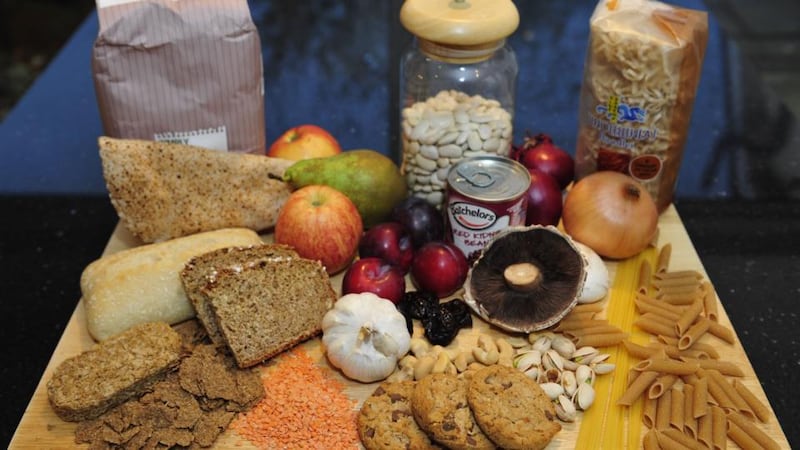Irritable bowel syndrome (IBS) is a chronic and debilitating disorder that can affect one in five adults, predominately women in their 20s and 30s. Symptoms vary from person to person and from one day to another.
Common symptoms include constipation and/or diarrhoea, abdominal pain or discomfort, bloating and/or distension, flatulence, passing mucus and nausea.
Many avoid social interactions in case of embarrassing symptoms such as wind. Others experience urgency to open their bowels and find the symptoms so distressing they confine themselves to home or familiar soundings.

IBS can develop after a bout of gastritis or after the use of antibiotics. An overgrowth of bacteria in the small intestine and certain strains of bacteria are thought to play a role.
While the cause is unknown, people with IBS often report that stress and anxiety increase their symptoms.
Chronic symptoms
People with IBS have visceral hypersensitivity, meaning the nerve endings around the bowel are very sensitive. The condition is characterised by chronic and relapsing symptoms, but with no abnormal gut pathology.
Until recently we had limited success managing patients’ symptoms, but the new, evidenced-based low Fodmaps approach has changed that. Patients with severe symptoms can experience improvement and relief.
The low Fodmaps approach is dietitian- led and was founded in Monash University, Melbourne. It has been adapted to the UK and implemented at King's College, Guy's and St Thomas' Hospital, London. More GPs and gastroenterologists are now referring clients for advice on a low Fodmaps diet.
Fodmaps are types of carbohydrates found in the foods we eat, but not all carbohydrates are considered Fodmaps. A low Fodmap diet is low in fermentable oligo-, di-, mono-saccharides and polyols. These are complex names for a group of molecules found in foods that are poorly absorbed. These food molecules continue along the digestive tract, arriving at the large intestine, where they act as a food source for the bacteria that live there.
The bacteria then digest or ferment these Fodmaps, causing the symptoms of IBS. Fodmaps are found in everyday healthy foods, such as wheat, apples, pears, onions, garlic, some stone fruits, milk, yoghurt and in some sports drinks and gels, (see panel).
Alternative foods
No approach will work for everyone, of course, but the low Fodmaps diet has been shown to be effective for at least 70 per cent of people with IBS who try it and are compliant.
Although the diet has been proven to improve gastrointestinal symptoms, there is no evidence to suggest that it works for non-gut symptoms that are sometimes associated with IBS, such as headaches and skin problems.
Patients usually need t hree consultations with a dietitian trained in Fodmaps. Firstly, certain foods high in Fodmaps are excluded (see photograph of foods to avoid) from the diet for four to eight weeks.
Some people report improvements in their symptoms after two weeks. Suitable alternative foods (see photograph of allowed foods) are eaten during these weeks to ensure a balanced intake of nutrients.
After the four to eight weeks, a review appointment is necessary to agree the reintroduction of certain foods in a certain order. This allows the patient to identify trigger foods.
The final consultation allows the dietitian and patient to complete the nutritional management of symptoms once the trigger foods are known.
After the initial elimination period, many people can return to their usual diet with just a few high Fodmap foods that need to be avoided or consumed in small amounts, such as wheat, rye, honey, apples, peas, mushrooms, onions and garlic. Increasing or decreasing your fibre intake can help IBS symptoms. The amount of fibre you need will vary depending on your symptoms, tolerance of high-fibre foods and current fibre intake. Patients undertaking this diet need to ensure that they choose suitable nutritious alternatives to avoid nutritional deficiencies.
Fibre intake
For example, avoiding wheat-based products may reduce their fibre intake and with four
out of five
Irish adults not eating enough fibre, finding another fibre-rich option is particularly important.
Gradually increasing low Fodmap food, such as oats and oat bran, will provide a good source of soluble fibre.
Oats are commonly taken as porridge for breakfast but can also be used as an
ingredient in general cooking, given the beneficial links between oats and cholesterol, diabetes and digestive health. While Fodmaps are not the cause of IBS, restricting and managing them reduces symptoms. The low Fodmaps diet is not a long-term diet.
The aim is to identify which Fodmap foods cause symptoms. The goal is to improve the quality of life of IBS sufferers while still ensuring they consume the recommended balance of nutrients per day.
Paula Mee is lead dietitian at Medfit Proactive Healthcare. Email pmee@medfit.ie or follow @paula_mee









